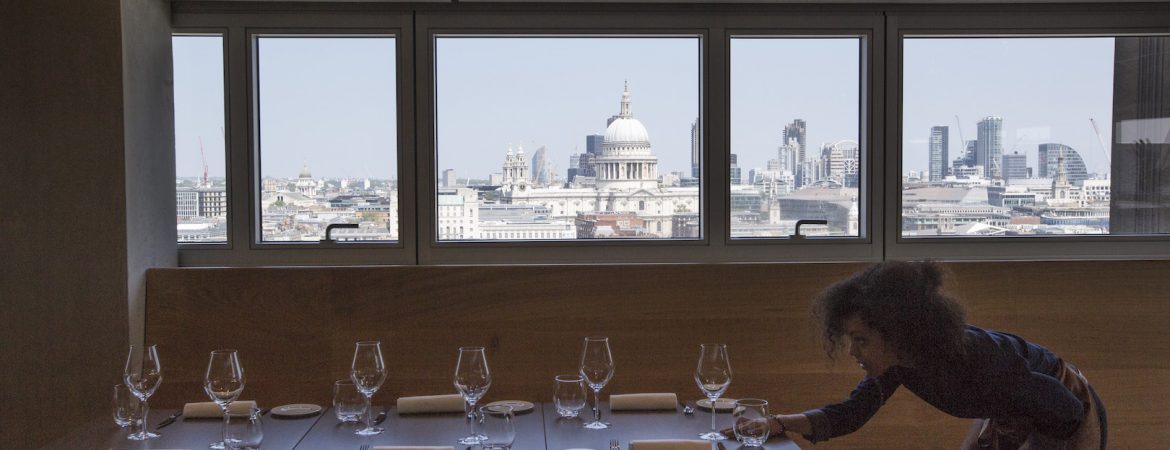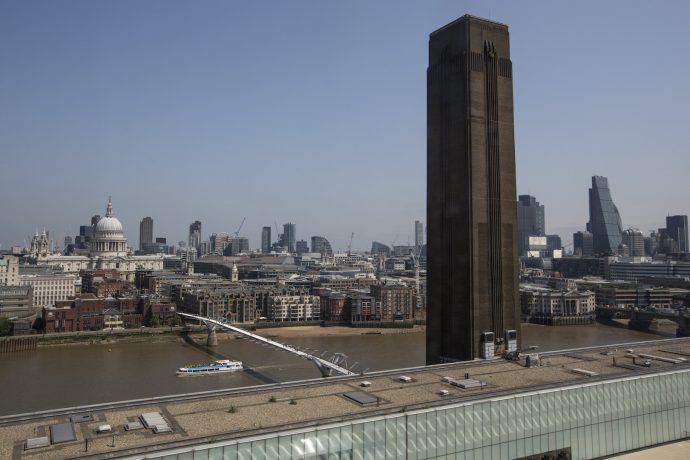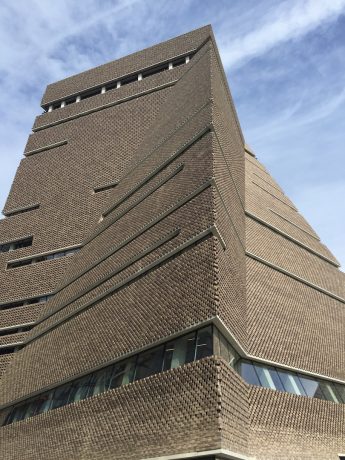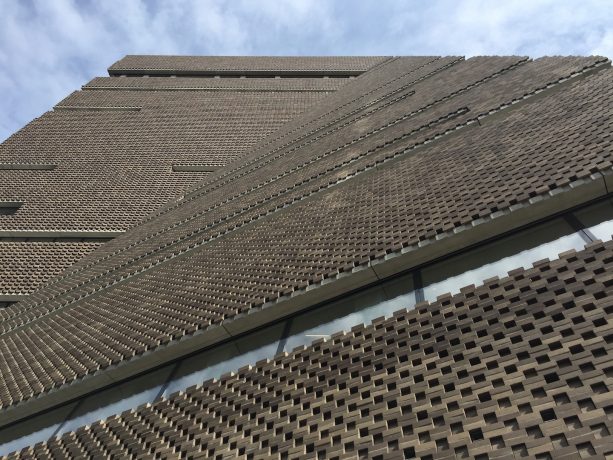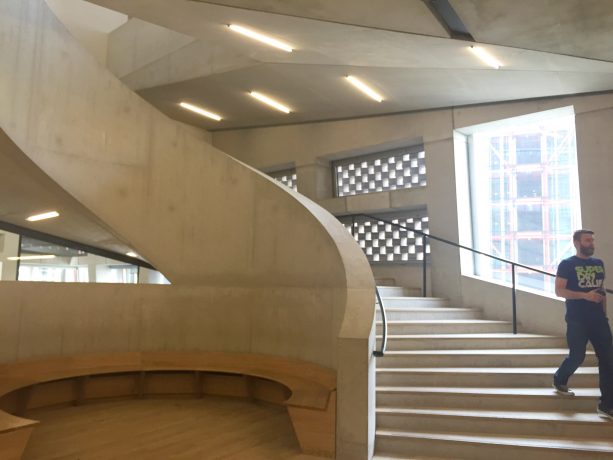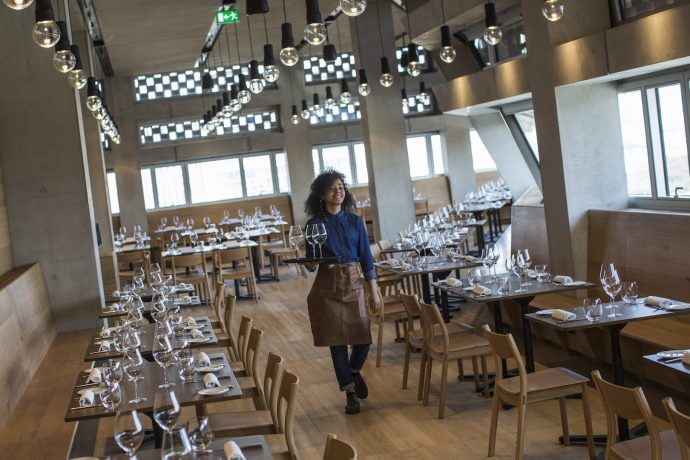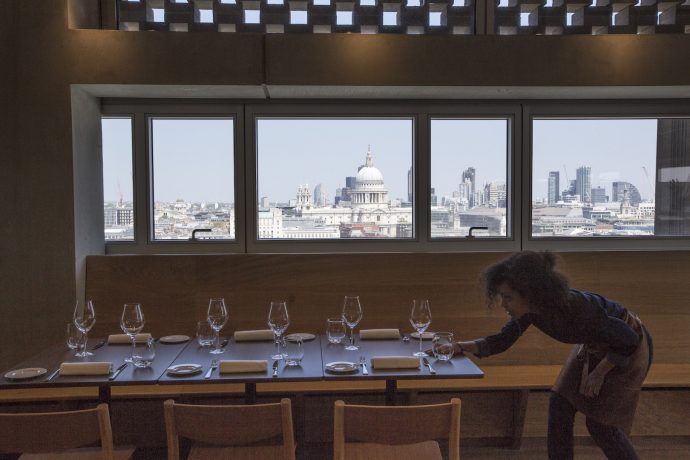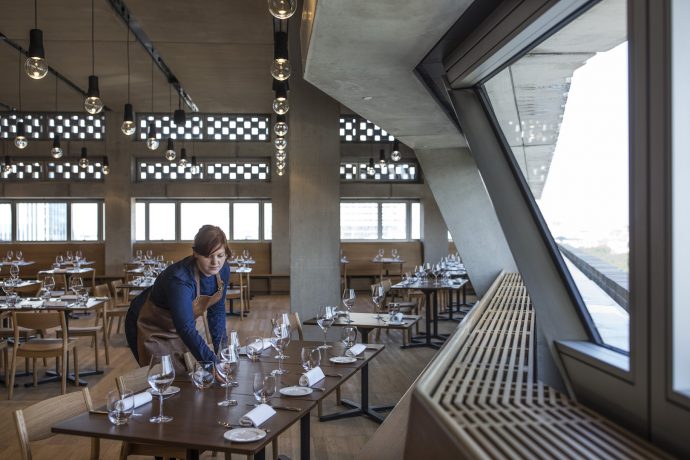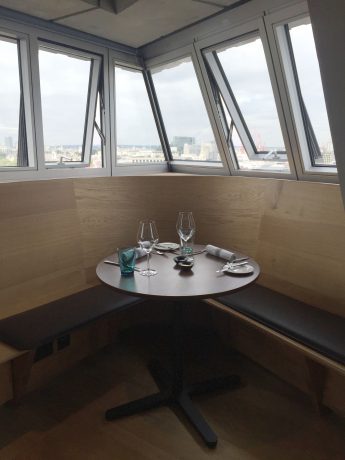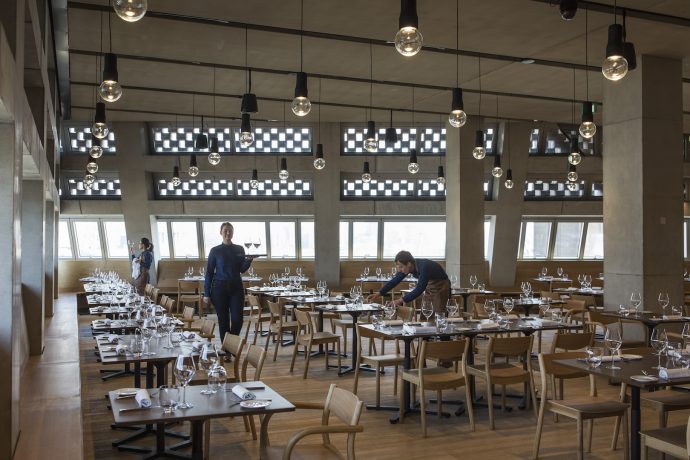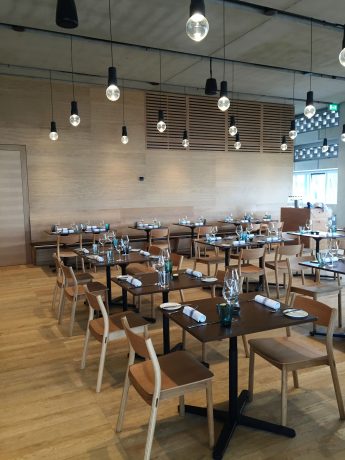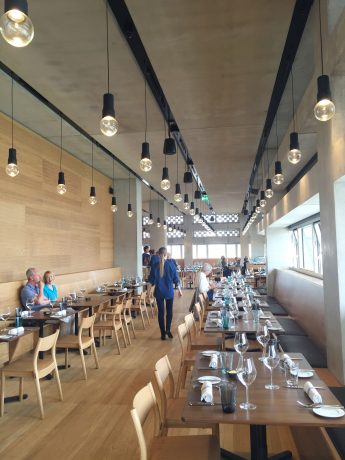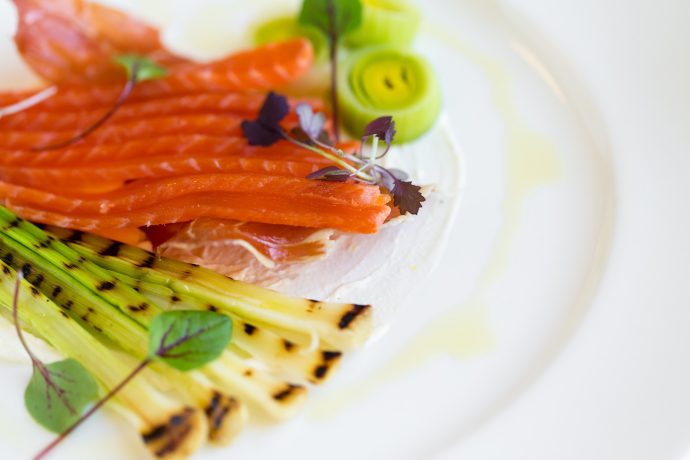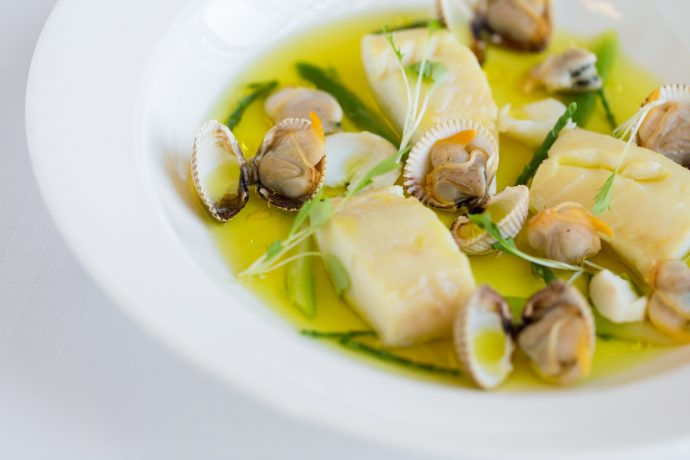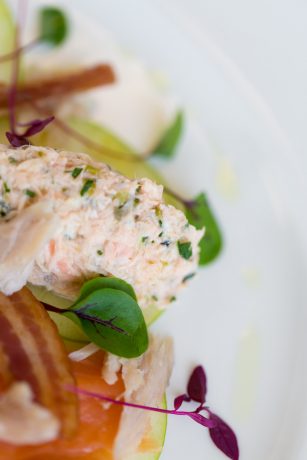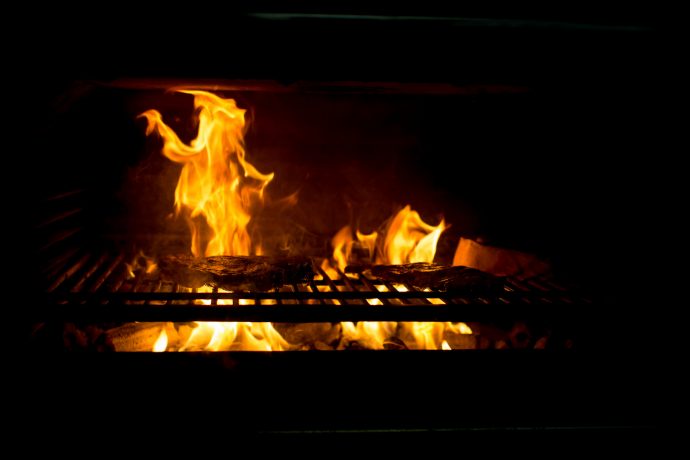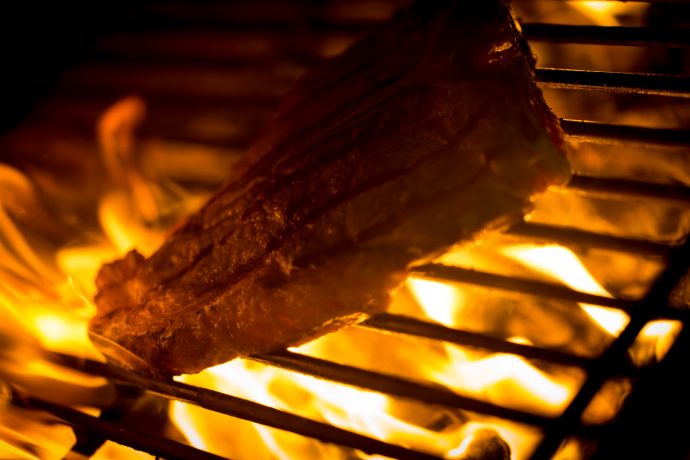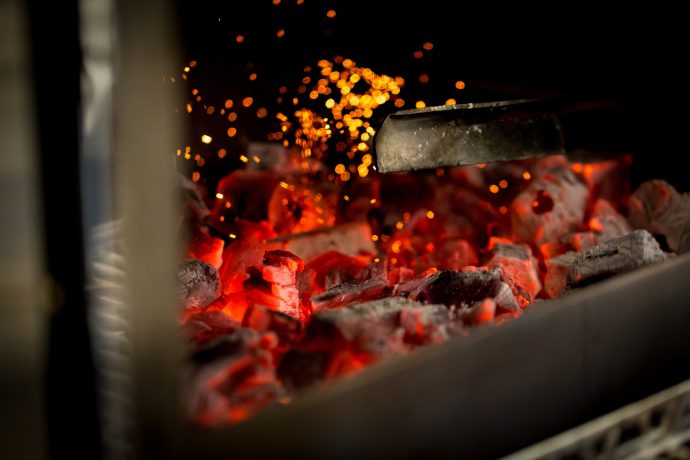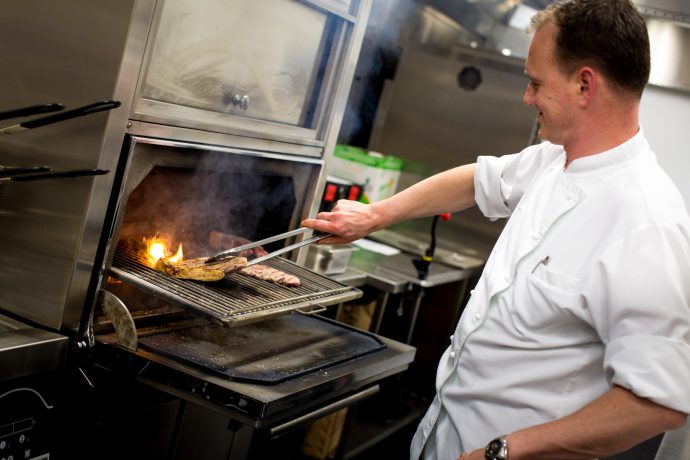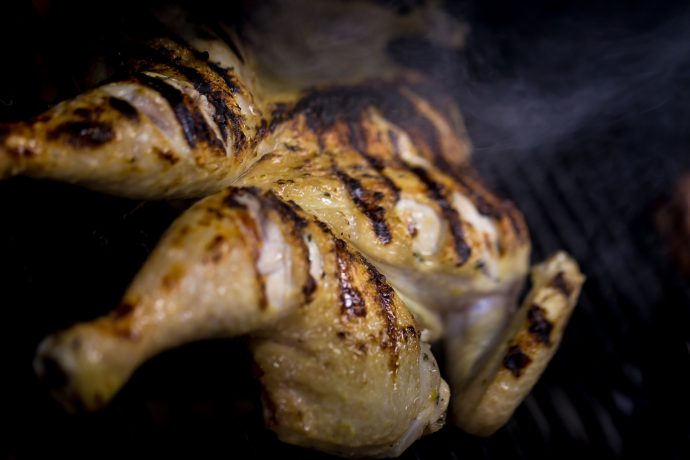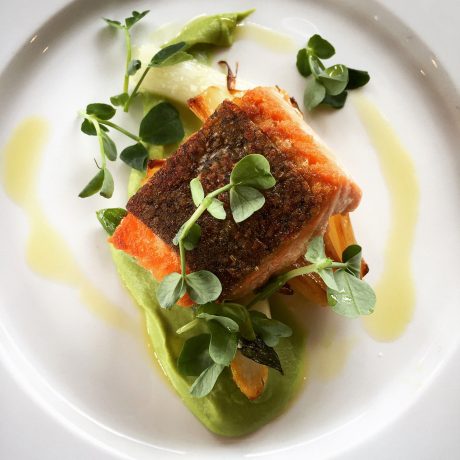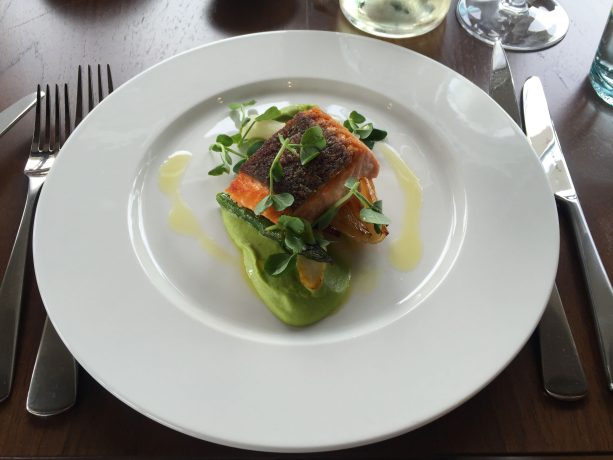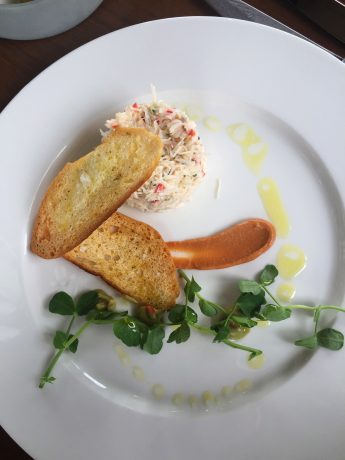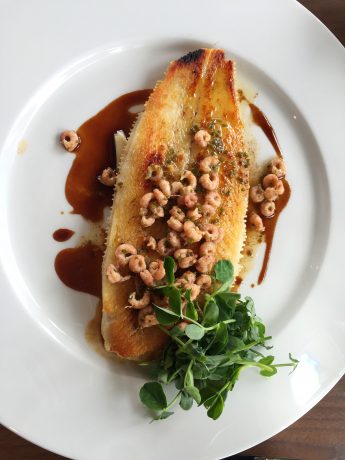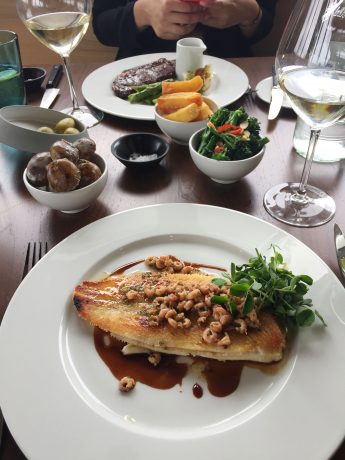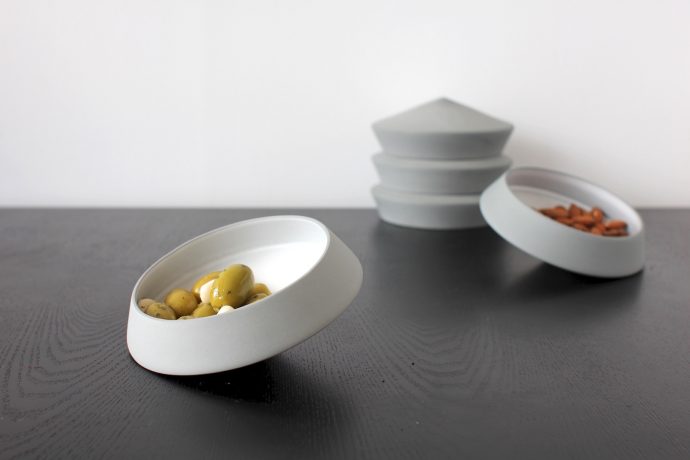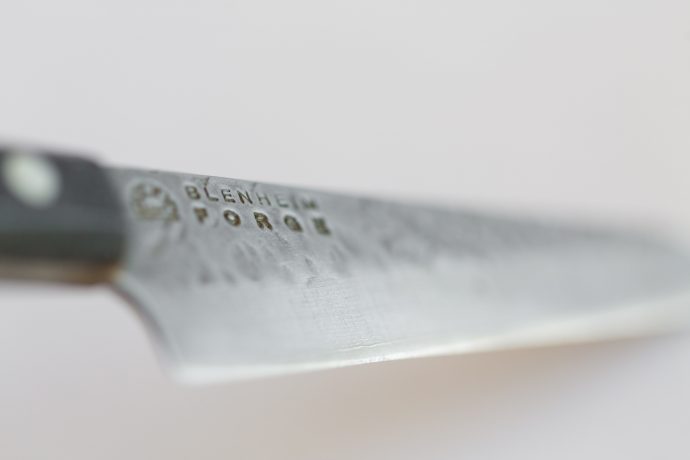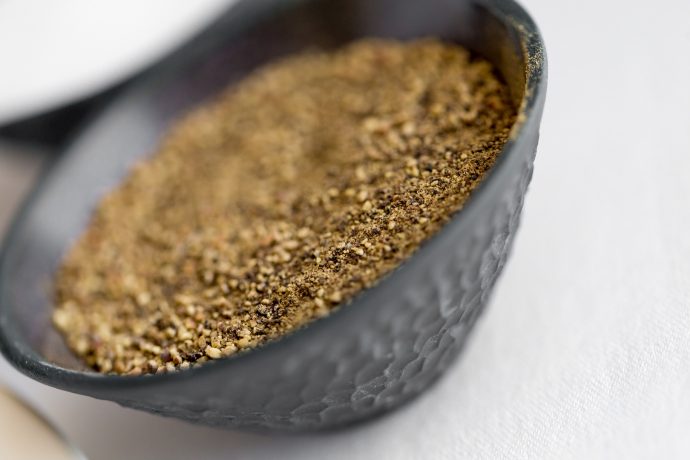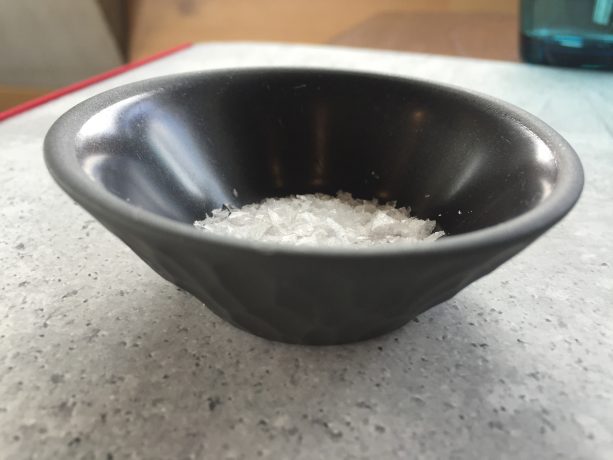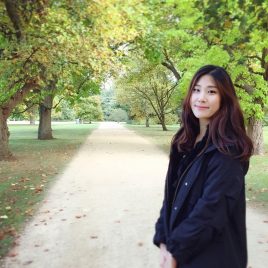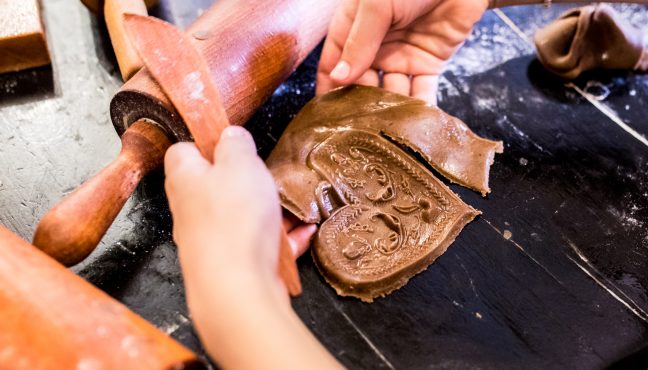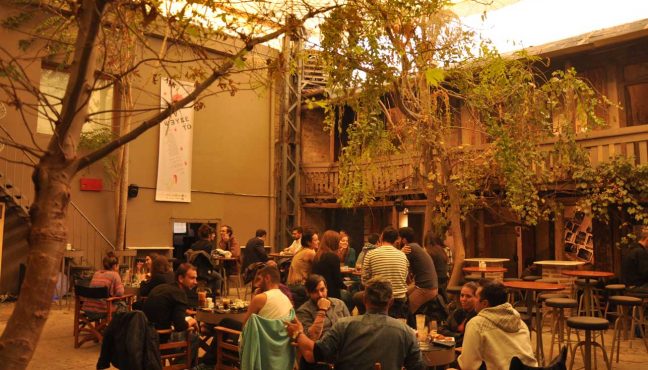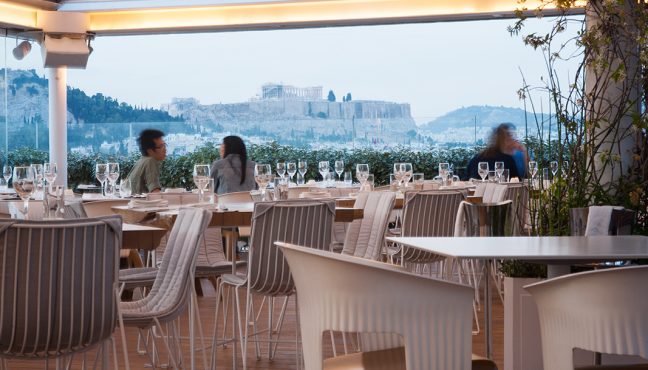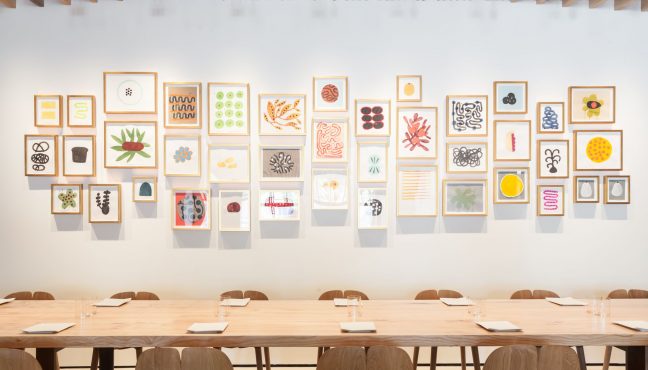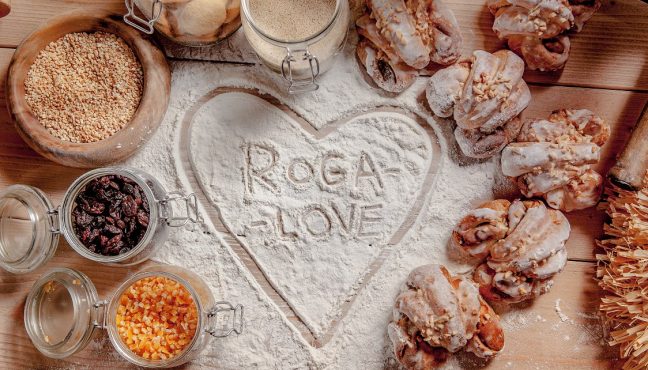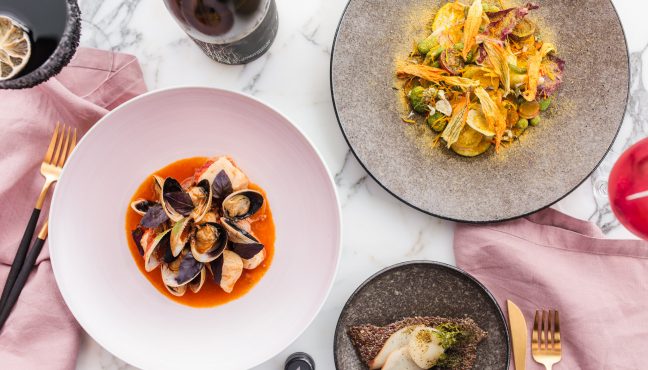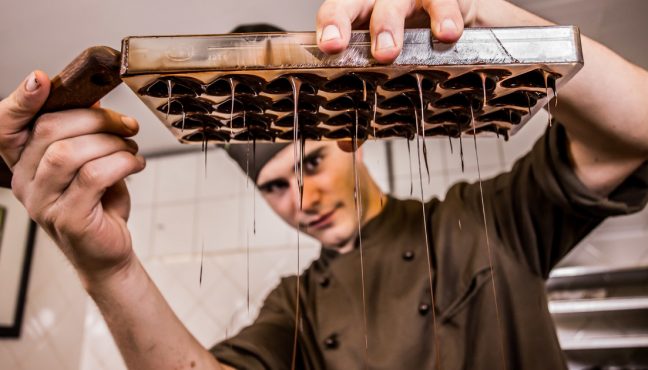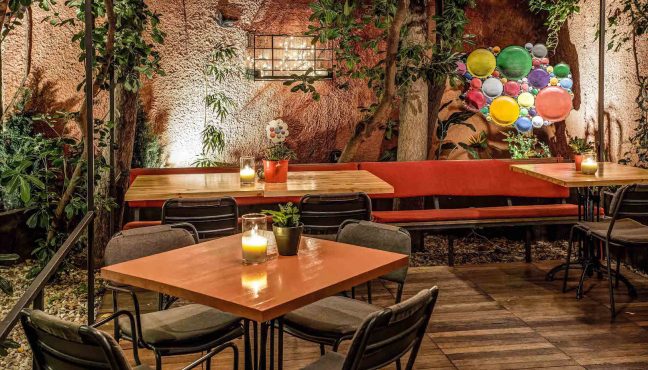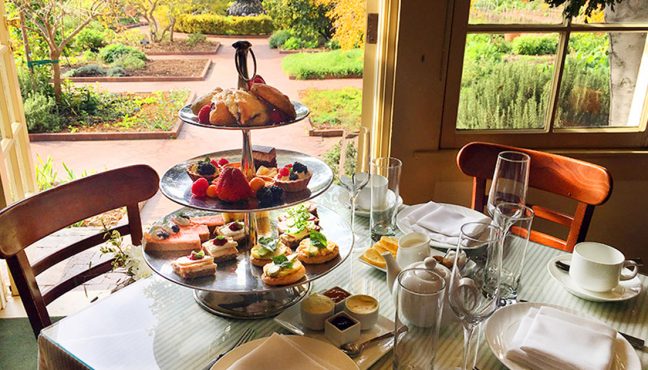Tate Modern’s new Switch house, designed by Herzog & de Meuron, the same architects of the original building, shows how the aesthetics of raw concrete can be used to create a rather beautiful combination of elegance and edge, and making us believe that concrete, with all its industrial properties, can look rather romantic. Before entering, we stood outside at the foot of the large building, looking up at the clean lines of the outer edges which were shaped to look similar to a re-vamped industrial power plant.
It was a sunny day when we visited and the muted colours of the interiors were given warmth by the sun rays coming through the futuristic windows, the strips of glass which more or less follows through the length of the walls. There are some exciting exhibitions on at present to accompany the opening of the building, attracting even more visitors to this major art hub: the Georgia O’Keefe as well as Mona Hatoum and Bhupen Khakar. The Switch House is also the first gallery ever to have such an extensive space dedicated solely for performance art, film and installations.
It was our first time to visit here, and as soon as we got onto the elevators of the Switch House, without a second thought, we firmly pressed onto the level ‘10’ button. The new building consists of ten levels of which the highest level ten is a roof terrace. On the opening night of the Switch House back in June, apparently the wait to get to the top floor was excessive. We felt lucky to be able to make a quick and easy visit to the stunning roof terrace; as anticipated we found that level ten provided a breathtaking 360 degree view of the iconic London skyline: a parade of British architectural sights, St. Paul’s, the Shard, and the London Eye could be seen as well as others. After a few rotations on the floor with a very late morning coffee, and more than enough touristic photo taking, we finally stepped down the winding concrete steps to level nine for the main event of our afternoon: Lunch at the Level 9 Restaurant.
The restaurant and cafe at Tate Modern has always been a favourite of ours to wind down after a full on day looking around exhibitions, so we were especially excited to see what the new Level 9 restaurant would offer. Arriving at the bright and spacious restaurant, what first came to our attention was the iconic views outside. London does not have a great many restaurants offering views like these, and it feels like a treat to be able to dine here. Before being seated for lunch we were privileged to be able to organise a quick chat with the Head Chef Anthony (Tony) Martin; once we were escorted to the quiet private dining room at the back of the restaurant we were warmly met with by Tony himself.
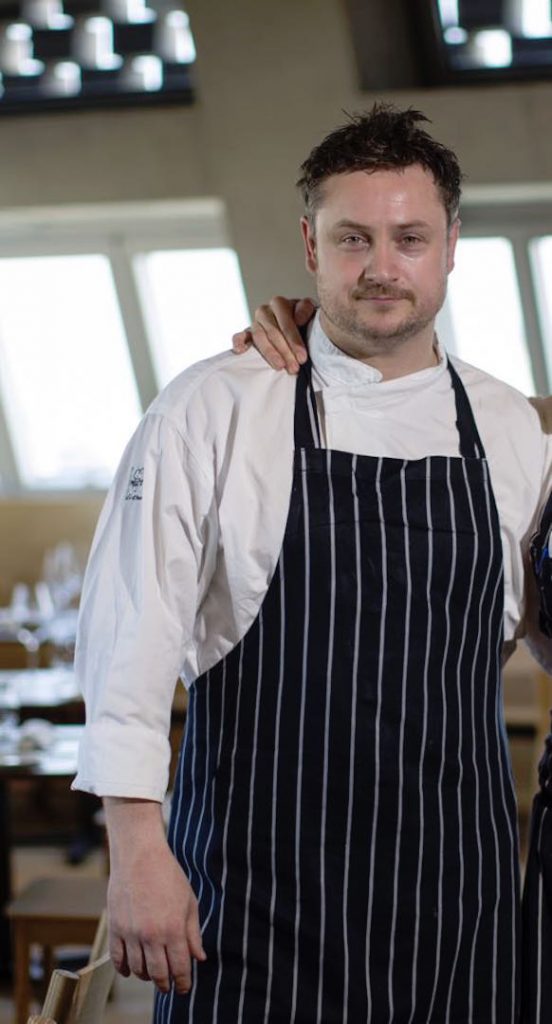
I understand you were working with the Tate Britain restaurant prior to the new Switch House restaurant on Level 9. What’s new?
Yes, I used to run the Tate Britain restaurant, The Rex Whistler, in conjunction with the ‘Late Tate’, and the Level 6 restaurant as well. The Rex was predominantly an old gentleman’s club type restaurant. This new founded one (Level 9 restaurant) is kind of trying to do a more of a modern British with a twist, so yes it is a bit different. It’s a bit more self-service over the Level Six now at the Kitchen and bar, and (Level Nine) is more of a fine-dining restaurant. So yes it’ all about Modern British food.
Would you say your menus are inspired by the exhibitions that Tate holds?
We do try to put something in there. When we meet with the galleries they give us an insight into the art and we will look at the exhibition and do some research from the Tate archives and we will try to link the food to the menu as a part of the ‘specials’ of the month accustomed and attuned to the art. We try to link when we can; because we’ve just opened, this menu (at Level Nine) currently is not as of yet, however in the Rex we do in conjunction with the exhibitions. The archives go back to the 1500s in art so there is a lot of information which we can get from it.
So you work closely with the gallery?
With Late at Tate nights in collaboration we will go to the archives, we will go to the curators who get involved. Like at the Rex for Late at Tate nights, we will start in a couple of months’ time here also since we have just opened. But yes we work closely with certain people.
What is Late at Tate nights?
The Late at Tate nights are ticketed event where we try to link the food we offer with the exhibition and the art being displayed. So we try to recreate the food that they (the artists) had in their art period. We also try to link the food to the art. For example, Hogarth exhibition we held beef nights called HOGARTH, GIN AND FOOD (March 2015). Hogarth was very beef oriented. At another Late at Tate there was a Barbara Hepworth exhibition who was originally from Cornwall, so we had a Cornish night with Cornish produce, such as oysters. So we do try to link it. (The next Late at Tate event will be on the 7th of October, further details are posted on the Tate website nearer the date).
Hogarth exhibition we held beef nights called HOGARTH, GIN AND FOOD. Hogarth was very beef oriented.
Do you have a favourite artist of yourself?
Not really, to be fair before I came to the Tate I was not really into art. We do walk about now during the exhibitions especially during the preview nights. I think the Matisse exhibition (HENRI MATISSE: THE CUT-OUTS 17 APRIL – 7 SEPTEMBER 2014) was very good, my most favourite and the busiest one. Georgia O’Keefe I have looked around and Mona Hatoum is quite interesting. So we do try to look around when we get the time.
What would you say is the main difference between working in a museum restaurant and a non-museum setting?
Previously I was working in a Michelin star restaurant and the clientele is very different here; they know what they want. They want a quick kind of lunch: nice food and they are not very fussy people. They just want good food at an affordable price and that is what we try to collaborate with them on that and give the best produce for the price. Obviously all of our profits made in the restaurant go back to the gallery to make it better. So yes, I would say the clientele is very different thing, because you have people that are not necessarily foodies but they want good food.
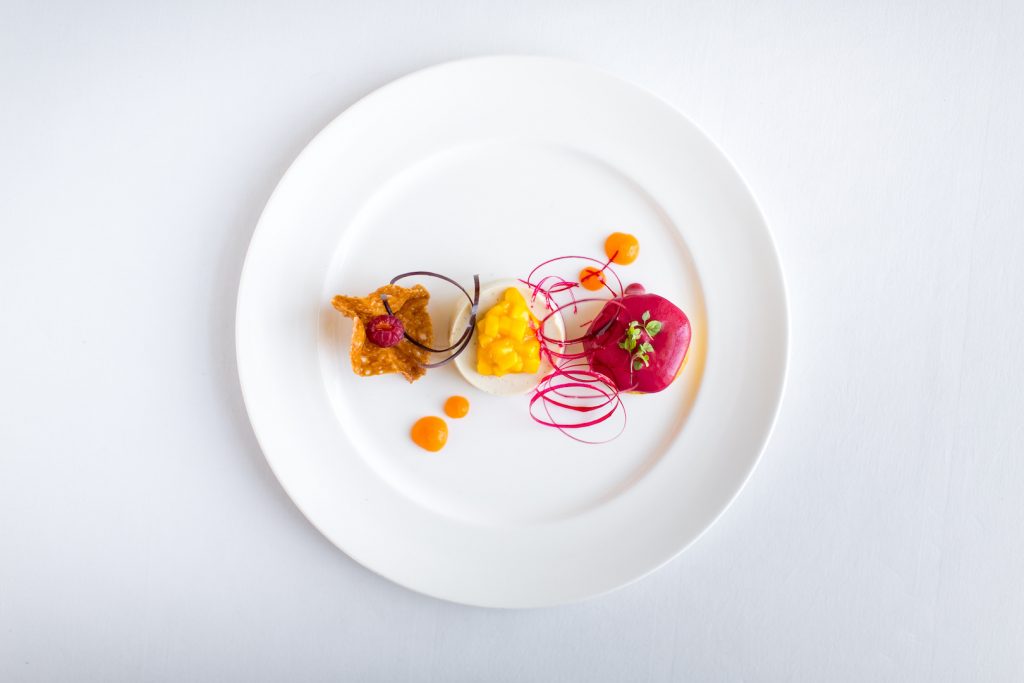
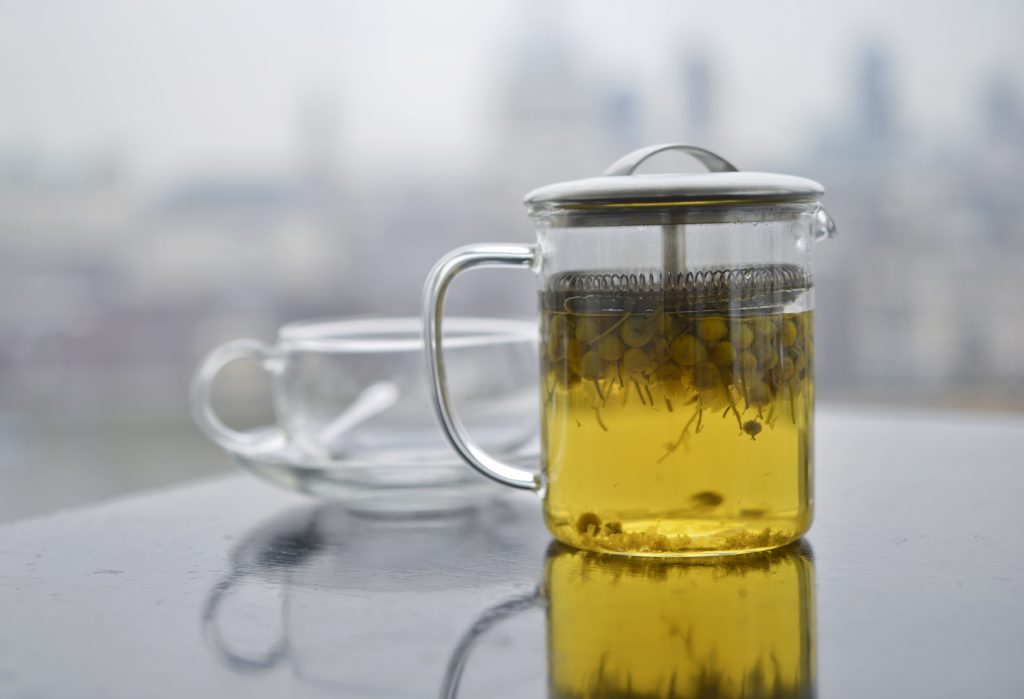
I’ve heard that you aim to do local British sourcing for the food.
Yes, I go out and find the supplies. We use a lot of fish supplies from the day boats on the coast; I see the fish guys regularly every couple of months in Scotland and Newlyn to pick the fish. We get the meat from Yorkshire breeds. Vegetable supplies again we use as much local producers as we can. Not big chain people, we prefer to use the small producers as we like to put back to the community.
How come you have limited opening times for the restaurant?
We only open for dinners on Friday and Saturday, purely because of the costs for security, and obviously the art and the opening times of the galleries. It is the same with our Level 6.
Obviously all of our profits made in the restaurant go back to the gallery to make it better.
Feeling hungry and seated at the restaurant now, we studied the menu, finally choosing the Cornish red crab and trout for our starters and a sirloin steak and fried lemon sole for our mains along with a few side dishes. The food was by all means excellent, and generous in portions- we were stuffed by the end of it! It was particularly interesting to see that towards the end of the menu there were credits to the artists who created some of the tableware and also a note about the background of the pieces.
Do not miss the olives in bowls designed by Lauren Nauman who designed them in such a way so the bowl can spin from person to person on the table. We’re informed the salt bowls were designed by Michael Fargo in response to the building and also that the steak knives are British designed and made in Peckham by Blenheim Forge. Perhaps this is the appeal of having a restaurant in a museum setting, to promote craftsmanship within their restaurant. This delicately ties the appreciation of the art and culinary experiences together, making the transition from gallery to restaurant smooth by bringing in the art within the food setting.
